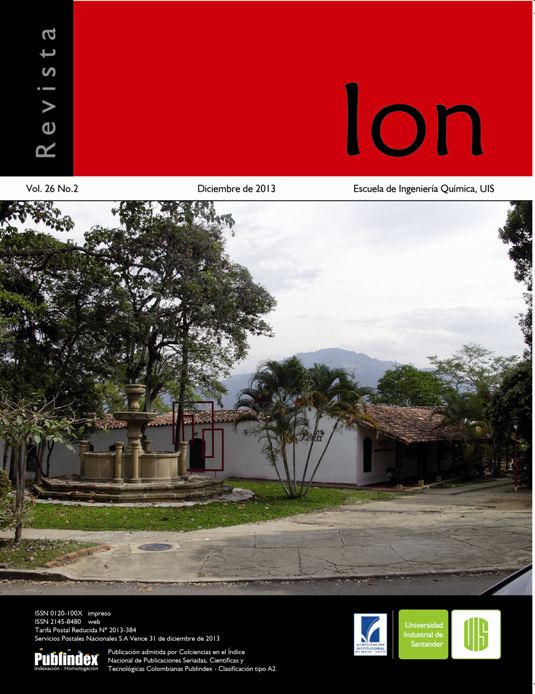Effect of particle size and humidity on sugarcane bagasse combustion in a fixed bed furnace
Published 2013-12-26
How to Cite
Abstract
Abstract
The panela industry is one of the most important Agro Industries in Colombia, making it the largest percapita consumer and the second largest producer worldwide. The fuel used in this process is traditionally the sugarcane bagasse (SB) which is a byproduct of milling. However, due to the low efficiency of panela furnaces additional fuel is required such as wood, used rubber tires and coal. The fixed-bed furnaces inefficiency is mainly due to incomplete combustion of SB caused by the influence of process variables. Therefore, the aim of this work was to study the influence of particle size (PS) and moisture content (MC) over the combustion stages of SB in fixed-bed furnaces. A three-level factorial design was proposed for PS and MC of SB where the temperature and gas concentration were considered as response variables to evaluate the furnace performance. The results obtained in this work show that if the MC increases then the SB yield in the combustion is decreased. On the other hand, the increasing PS can counteract the effect of the MC of SB.
Keywords: Sugarcane bagasse combustion, influence of particle size, influence of moisture, temperature profiles, concentrations profiles.
Efecto del tamaño de particular y la humedad sobre la combustión de bagazo de caña en un horno de lecho fijo
Resumen
La agroindustria panelera es una de las más importantes en Colombia, convirtiéndolo en el primer consumidor percápita y segundo productor a nivel mundial. El combustible utilizado en el proceso ha sido tradicionalmente el bagazo de caña (SB) subproducto de la molienda. Sin embargo, debido a las bajas eficiencias de los hornos paneleros se requiere de combustibles adicionales como leña, caucho de llanta y carbón. Gran parte de la ineficiencia de los hornos de lecho fijo se debe a una combustión incompleta del SB, ocasionada por la influencia de las variables del proceso. Por lo anterior, el objetivo de este trabajo fue estudiar la influencia de las variables tamaño de partícula (PS) y contenido de humedad (MC) sobre las etapas de combustión del SB en hornos de lecho fijo. Se planteó un diseño factorial de experimentos con tres niveles para el PS y el MC del SB, donde la temperatura y la concentración del gas de combustión fueron consideradas como variables de respuesta para evaluar el desempeño del horno. Los resultados obtenidos muestran que el incremento del MC ocasiona una reducción en el rendimiento de la combustión del SB. Por otra parte, el incremento en el PS puede contrarrestar el efecto del MC del SB.
Palabras clave: combustión de bagazo de caña, influencia tamaño de partícula, influencia humedad, perfiles de temperatura, perfiles de concentración.

